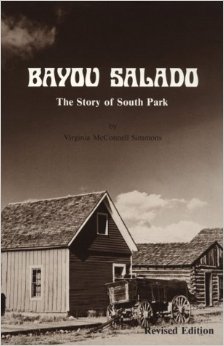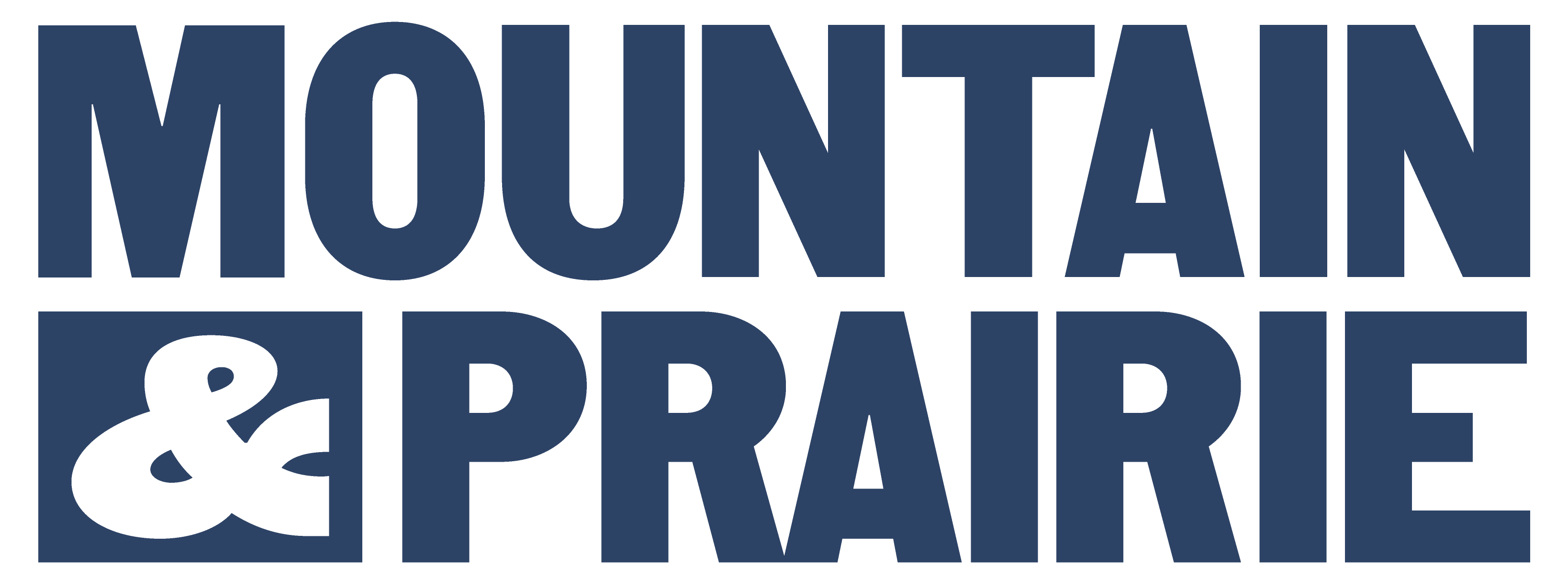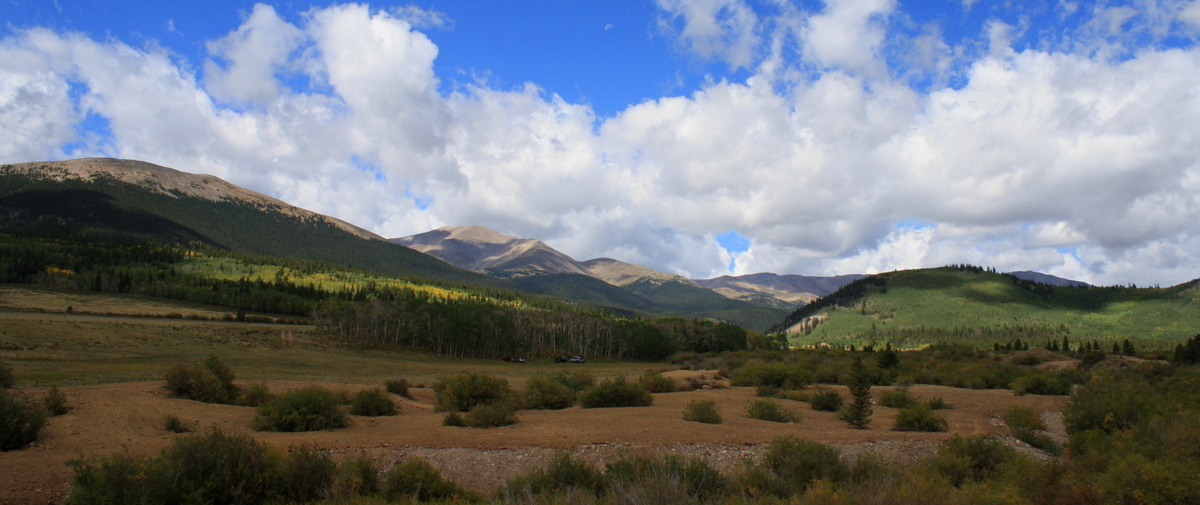Back in 1995, I was sent to Colorado with a number of my high school classmates for a leadership retreat that took place at a camp located just west of Buena Vista. Despite my obsession with camping, climbing, fly fishing, and mountains, this was the first time I’d ever ventured into the Rockies, the “real mountains.”
After landing in Colorado Springs, the retreat leaders picked us up and drove west along Highway 24 – Pikes Peak to the south, up and over Wilkerson Pass, and down into South Park. That wide-open basin – expansive grasslands surrounded by 14,000-foot snowcapped peaks – was my first real taste of The West. I’d never seen anything like it and had no context to compare it to other valleys or mountain ranges, but I knew it was a special place.
If someone had told me back in ’95, that 19 years later I’d be spending a huge portion of my time exploring, studying, and photographing South Park as part of my job as a ranch broker, my first response would’ve been “A ranch broker is a real job?,” followed by “That sounds too good to be true… Who the hell are you, anyway? Leave me alone please.”
——
 Now that you have the back-story on my almost-20-year fascination with South Park, you’ll understand why I picked up a copy of Bayou Salado, Virginia McConnell Simmons’ definitive history of the region. The book, written in 1966, details the history of the high altitude basin from the days before white men arrived, to Simmons’ present day when the area was just beginning to feel the early effects of development pressure encroaching from the Front Range.
Now that you have the back-story on my almost-20-year fascination with South Park, you’ll understand why I picked up a copy of Bayou Salado, Virginia McConnell Simmons’ definitive history of the region. The book, written in 1966, details the history of the high altitude basin from the days before white men arrived, to Simmons’ present day when the area was just beginning to feel the early effects of development pressure encroaching from the Front Range.
Although the book at times reads like a laundry list of specific names of homesteaders, miners, and other characters, the overall information and themes of the book are fascinating. It is tempting for me to try and recount all of interesting anecdotes from the book, but that would be a huge waste of your time – Simmons does a (sometimes overly) thorough job of detailing everything from battles between the Utes and Comanches to the massive influx of miners in 1859 to the sprawling 100,000 acre ranch owned by Sam Hartsel in and around the town that now bears his name.
But here are a very few of the many tidbits from the book, just to whet your appetite:
- When Spaniards first visited South Park in the early 1800s, they named the area Valle Salado – Salt Valley – because of the salt springs located on the western side of the basin. French trappers and explorer called it Bayou Salade – Salt Marshes. American Mountain men combined the two names and called it Bayou Salado. Still sounds a little too French for my taste, but we’ll go with it.
- In the 1840s hunters began calling the area South Park, along with the other huge Colorado valleys of Middle Park and North Park. The word “Park” comes from the French word parc, which means “game preserve.”
- South Park has always attracted rugged individuals seeking their fortune – first beaver trappers, followed by gold miners, silver miners, back to gold miners, salt miners, and finally ranchers. If Ms. Simmons were around today, it would be interesting to hear her take on the current iteration of fortune seekers – individuals, funds, and Front Range municipalities that are buying up South Park’s water at an alarming rate.
- Even in the early days, South Park could be a rough and tumble kind of place. In 1880, a Fairplay saloonkeeper shot and killed a young man out of anger (and probably drunkenness). The saloonkeeper was found guilty of manslaughter, not murder, which did not sit well with some of the Fairplay locals. So, the angry gang of locals cruised down to the town jail, beat up the guards, and dragged ol’ barkeep out of his cell. He was promptly escorted to the town square and up to the second story of the Courthouse. After fitting him with a well-tied noose, the mob simply threw him out of the window. A classic South Park “necktie party.” The crazy part is that the courthouse is still there (pictured below) and is now the Fairplay library.
- The local Methodist minster, Father John Dyer, was also the South Park mailman and would carry mail, even in the dead of winter, up and over 13,185-foot Mosquito Pass. He wore 10-foot long wooden skis to traverse the high altitude pass, crossing back and forth between South Park and Leadville mining camps. No matter how many mountains I climb or 100 mile runs I complete, stories like this that make me feel like a complete softy and wimp.
- Mount Silverheels, the 13,829-foot mountain that looms over Red Hill Ranch, was named for a beautiful “dancer” who went by the name Silver Heels and worked some of the saloons and dancehalls around South Park mining camps. According to legend, she contracted small pox and ruined her looks, so the local miners named the mountain for her. (I’d love to know the real story behind the quote “Her fame and popularity as a dancer became unmatched.” Sorry Mrs. Simmons, you’re not fooling anyone with your “dancer” code word.)
The book is a perfect combination of crazy anecdotes and interesting historical facts, and it’s well written enough for easy and quick reading. In the few parts where the story bogs down with too many details, the reader can skim along until it picks back up. For anyone interested in South Park or its history, I highly recommend spending a few days with Bayou Salado.









